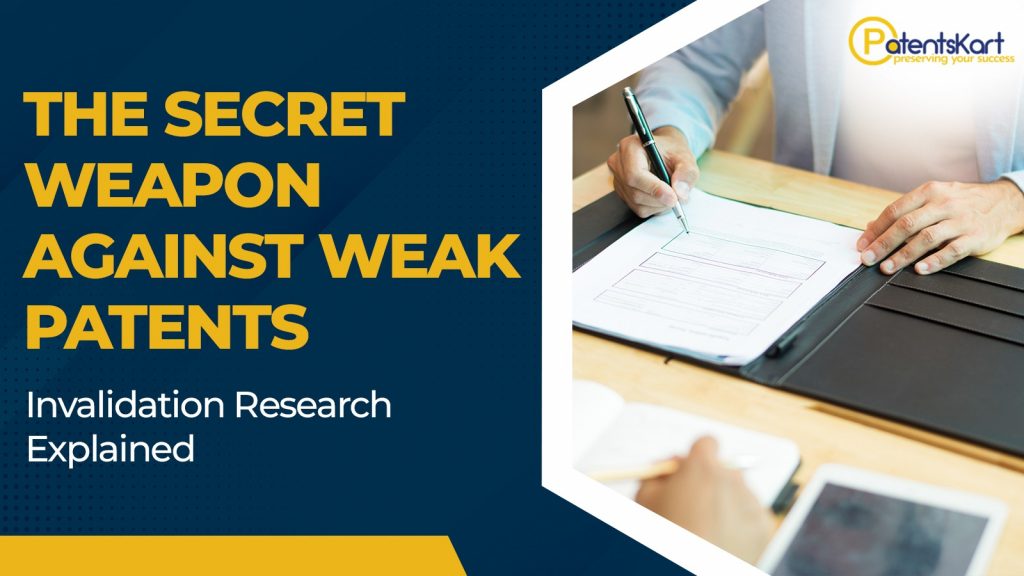In the world of innovation and intellectual property, patents are both a shield and a sword. They protect inventors from infringement while providing them with the legal means to defend their rights. However, not all patents are created equal. Many patents lack robust foundations, leaving them vulnerable to invalidation. For businesses and legal professionals navigating the complex world of intellectual property, invalidation research is the secret weapon to combat weak patents effectively.
What Is Invalidation Research?
Invalidation research is the process of systematically analyzing the validity of a patent by identifying prior art, technical inconsistencies, or legal loopholes that challenge the novelty or enforceability of the patent. The ultimate goal is to find evidence that undermines the patent’s claims, rendering it invalid in the eyes of the law.
This process is typically employed during:
- Patent Disputes: To defend against infringement lawsuits.
- Due Diligence: Before acquiring a patent or launching a product in a competitive landscape.
- Litigation Strategies: To gain leverage in negotiations or court battles.
Why Are Patents Vulnerable to Invalidation?
Many patents are granted despite flaws in their application or examination process. Common vulnerabilities include:
- Prior Art Overlooked: Relevant prior art that predates the patent’s filing might not have been considered during the initial examination.
- Lack of Novelty: The invention claimed in the patent might not be sufficiently different from existing solutions.
- Non-Obviousness Challenges: The patented invention may not involve enough inventive steps to qualify as non-obvious to someone skilled in the field.
- Specification Deficiencies: Ambiguities or lack of detail in the patent’s specifications can weaken its enforceability.
The Invalidation Research Process
1. Defining the Scope
The first step involves understanding the patent in question, including its claims, specifications, and field of technology. This helps researchers identify the exact aspects that need to be challenged.
2. Prior Art Search
Researchers comb through:
- Patent databases
- Academic journals
- Technical manuals
- Industry publications
- Online repositories
The goal is to find prior art that predates the patent’s filing date and overlaps with its claims.
3. Analyzing Claims
Each claim in the patent is scrutinized for potential overlaps with prior art, inconsistencies, or technical flaws. This step often involves technical experts and legal professionals working in tandem.
4. Compiling Evidence
Once relevant prior art or inconsistencies are identified, the next step is to compile this evidence into a coherent argument that can be presented in court or during negotiations.
5. Preparing Legal Strategies
Invalidation research culminates in a strategy tailored to the specific patent dispute. This strategy may involve filing a petition for invalidation, presenting findings in court, or leveraging the evidence during settlement discussions.
Benefits of Invalidation Research
- Cost-Effective Defense: Challenging a patent’s validity can be more cost-effective than prolonged litigation.
- Strategic Leverage: Demonstrating weaknesses in a patent can strengthen your position in licensing negotiations or lawsuits.
- Risk Mitigation: Identifying weak patents early prevents businesses from investing in risky ventures or exposing themselves to legal vulnerabilities.
- Market Freedom: Successfully invalidating a competitor’s patent clears the way for innovation and market entry without fear of infringement claims.
Case Study: Invalidation in Action
Consider a tech company accused of infringing on a competitor’s patent for a smartphone feature. The accused company’s legal team conducted invalidation research and discovered a university’s research paper predating the competitor’s patent filing. This prior art directly addressed the patented feature, ultimately leading to the patent’s invalidation and dismissal of the lawsuit. The accused company saved millions in potential damages and legal costs while protecting its market share.
Who Can Benefit from Invalidation Research?
- Businesses: To defend against patent trolls or competitors’ aggressive litigation.
- Law Firms: To bolster their clients’ defense or prosecution strategies.
- Investors: To assess the strength of a patent portfolio before acquisition.
- Startups: To ensure freedom to operate without infringing on questionable patents.
Conclusion
In the battle of innovation, a weak patent can crumble under the weight of strong invalidation research. By meticulously analyzing claims and uncovering prior art, invalidation research provides businesses with a powerful tool to safeguard their interests and promote fair competition. Whether you’re defending your rights, challenging a competitor, or navigating the complexities of intellectual property, understanding the value of invalidation research is essential in today’s fast-paced innovation landscape.







